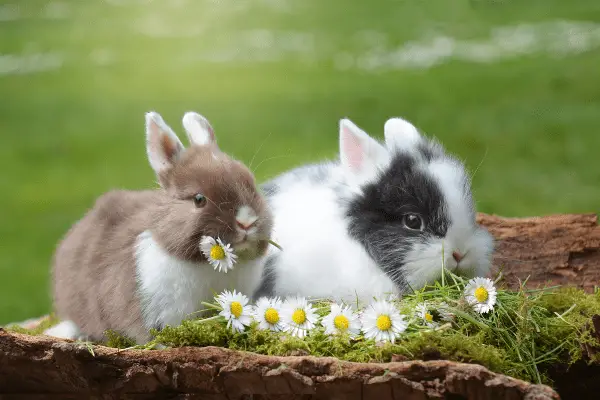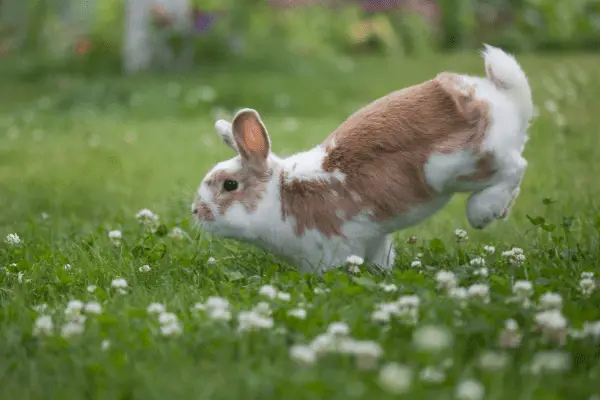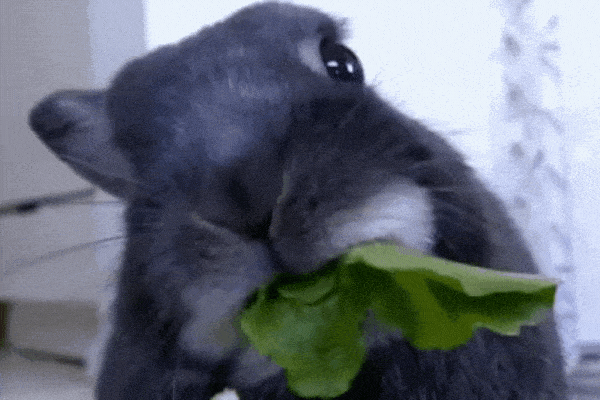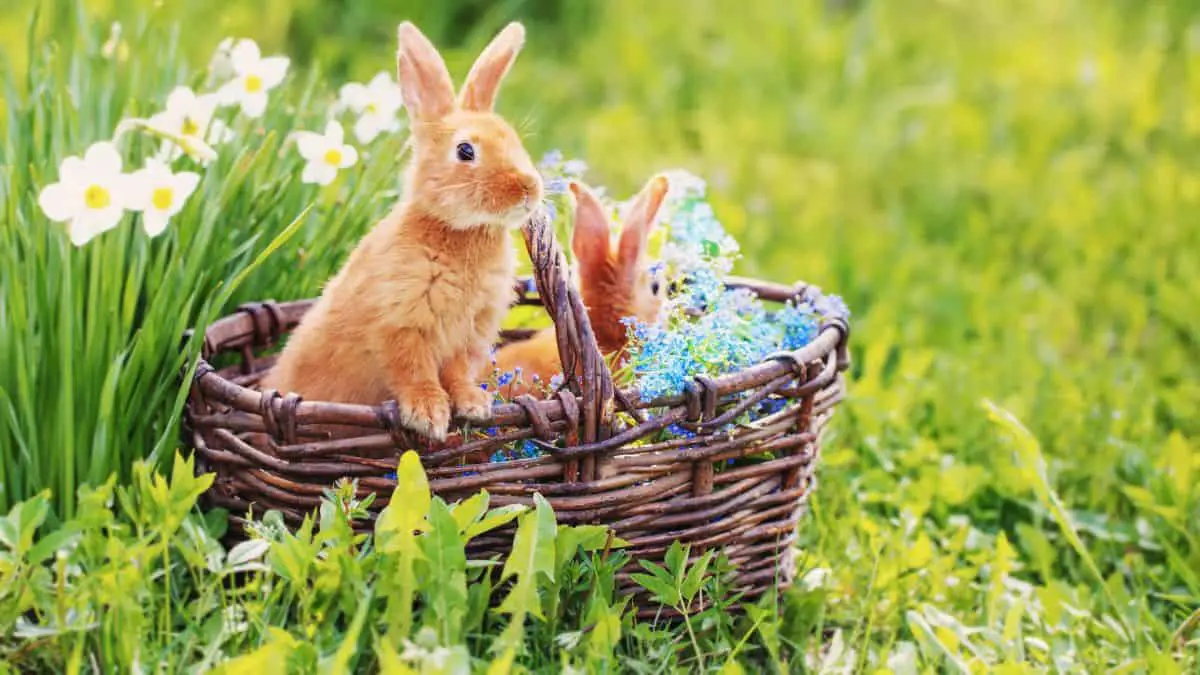Is A Rabbit A Primary Consumer? + Difference between consumer and producer
Rabbits are cute little animals that like to feed on grass or hay most of the time. For those in captivity (pets), they can even go as far as eating vegetables, fruits, and other juicy greens that rarely grow in the wild nature.
Rabbits (and their close ‘cousins’, hares) are part of the animal food chain and food web like any other living creature. So, having that in mind, is a rabbit a primary consumer or a producer?
Rabbits are considered to be primary consumers as they directly feed on organisms such as grass, plants, and other assorted shrubs that make their own food through the help of sunlight and other natural resources. Rabbits are also a source of food for secondary consumers such as snakes.
But it does not all end there… Have you ever wondered how rabbits position themselves in the ecological food chain?
Let’s dive in and see!
What Level of Consumer is a Rabbit?
As I have just mentioned above, a rabbit’s main diet consists of grass, hay, vegetables (for pet domesticated rabbits), and other plants. For the rabbits living in the wild, their main source of food is grass, shrubs, wild fruits, and herbs.
One main characteristic that you will notice from all these food sources is that they are plants. Even more important is the fact that they are all organisms that make their own food and don’t rely on others to feed. These types of organisms are what we normally refer to as primary producers in the ecological food chain.
Producers make their own food by using the sun’s energy and the chlorophyll found in their systems through a process called photosynthesis.

So, where does all of this place rabbits?
Now, since rabbits feed directly on these plants, they are usually referred to as primary consumers. And this is because they can’t make their own food and therefore, have to get their energy directly from the primary producers.
Rabbits do not depend on other animals for food. This sets them apart from the rest of the meat-eating organisms on the food chain that rely on eating other animals to survive.
As a result, you’ll find that rabbits mostly live near dense bushes or vast grasslands. By doing so, they manage to keep close to their primary food source all year round.
But wait a minute…
If rabbits are primary consumers, then who are the secondary consumers?
What Are Secondary Consumers?
Animals that have to eat primary consumers like rabbits to survive are known as secondary consumers.
That said, most of the secondary consumers are carnivores and can only eat meat from other animals to sustain their energy requirements.
On the other hand…
There are also a group of animals known as omnivores that can also be referred to as secondary consumers. This is because omnivores can eat both plants and meat to sustain their natural survival. All this depends on their current habitat and the availability of either of the two food sources.
With carnivorous animals, they cannot eat anything else apart from meat from other animals because their digestive systems aren’t built to handle plants.
This is what makes them the leading secondary consumers in the food chain.
Examples of secondary consumers include:
- Lions
- Humans (omnivorous)
- Foxes
- Wolves
- Bears (also omnivorous)
- Tigers
- Mountain Cats
- Eagles
- Raptors, etc.
Differences Between Primary & Secondary Consumers

So how do you know who is a primary consumer and who is a secondary consumer in the ecosystem? Where do we draw the lines that help to group these animals?
1. Primary Consumers
For most primary consumers:
- Their basic food source is primary producers. They get their energy requirement from directly eating primary producers since their bodies are incapable of eating and digesting meat.
- They consume the highest amount of energy. Primary consumers like rabbits, sheep, goats, and many others, get about 10% of their energy from the plants that they consume. This is the highest amount recorded in the entire food chain. Naturally, this also means that they carry the highest level of biomass among all types of consumers.
- They are mainly herbivorous. This means they fully depend on plant life and other primary producers that can make their own food through photosynthesis for their diet.
- They are prey to secondary consumers. Since secondary consumers can’t eat directly from primary producers, they have to get their food and energy requirements by consuming the primary consumers like rabbits. They make ideal prey because they also can’t feed on meat from other animals, making them very vulnerable.
2. Secondary Consumers
For most secondary consumers:
- They feed on primary consumers. This is because secondary consumers can’t make their own food from sunlight and also can’t eat directly from the primary producers. So, they have to compensate by preying on the primary consumers that eat from the base producers.
- They take lesser energy from their food source. Compared to primary consumers, secondary consumers only take up about 1% of their prey’s energy in their body systems. This means that they also have lesser biomass compared to primary consumers.
- They can either be omnivores or carnivores. There is a category of players like bears and human beings that can eat meat (from primary consumers) and also supplement their diets with energy gotten from consuming plants. On the other end, there are animals like foxes and lions that can only eat meat from primary consumers owing to the nature of their digestive systems.
- They can also be consumed by tertiary consumers. In some instances, you’ll find that other consumer animals can also eat secondary consumers. Human beings can basically eat almost any animal currently in existence. Other animals like crocodiles can also eat lions at watersheds while polar bears can eat seals and penguins that feed off fish.
Frequently Asked Questions
Are rabbits herbivorous?
Rabbits have been scientifically classified as herbivores for quite a while now.
Because of their digestive system’s nature, rabbits can only consume plants as that is what their bodies can break down and use easily. And this goes for all of the 30 or so species of rabbits currently in existence.
They cannot eat meat and have no other alternative food source away from the greens.
What do rabbits mostly eat?
Rabbits, like goats, pretty much eat almost anything green that makes its own food from the sun.
Out in the wild, you can find them feeding on the wild grass, low-lying shrubs, herbs, and some fruits.
For those kept as pets, they mostly feed on cultivated grass, hay, several domestic vegetables, fruits, and approved bunny feeds.

Are rabbits omnivores?
Rabbits are not omnivores like bears or human beings.
They can only feed on plants to sustain their natural energy requirements. That is why even in the wild, they normally stay around their sources of food like grasslands or near shrub vegetations.







